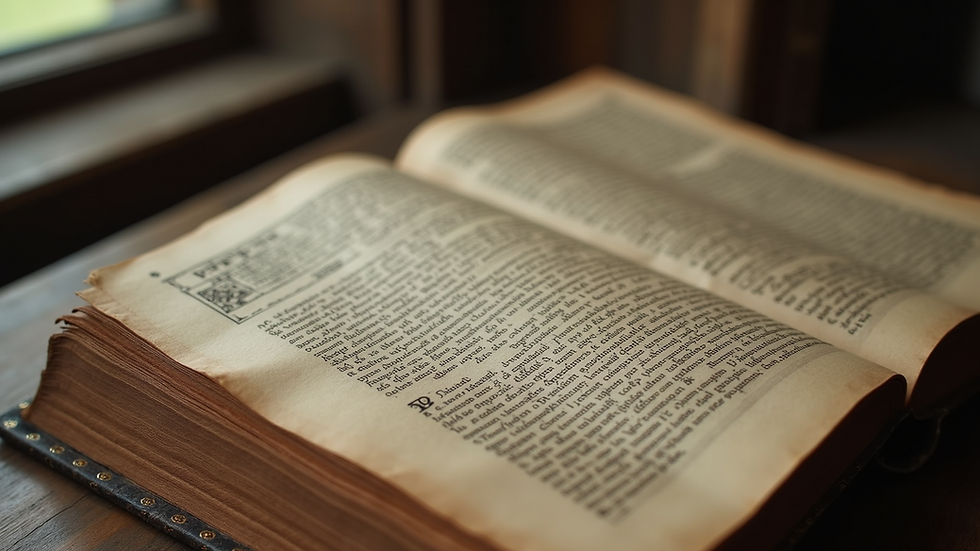Exploring the Rich History and Significance of the Irish Language
- Alan John
- Jul 21
- 4 min read
The Irish language, known as Gaeilge, is a cornerstone of Ireland's cultural identity. This beautiful language has a rich history that spans thousands of years. From its early origins in ancient Gaelic cultures to its current resurgence in modern times, the Irish language tells a story of resilience, pride, and connection to heritage.

The History of the Irish Language
The history of the Irish language can be traced back to the arrival of the Celts in Ireland around 500 BC. They brought with them their Gaelic language, which would evolve over centuries into what we know today as Irish. Written records in the early medieval period indicate that Latin and Old Irish were the primary languages used by scholars and monks.
By the 17th century, however, the Irish language faced significant pressure due to English colonization. The establishment of the Protestant education system enforced the use of English, leading to a decline in the Irish language. By the 20th century, the language was at risk of extinction, with many believing it had lost its place in Irish society.
Yet, the resilience of the Irish language has led to a revival in recent decades. With the establishment of the Gaeltacht regions (areas where Irish is the primary language spoken) and increased interest in irish language learning, the language began to flourish once more.

The Irish Language Today
In contemporary Ireland, the Irish language is more than just a means of communication; it represents cultural pride and national identity. Today, approximately 1.8 million people speak Irish, with varying degrees of fluency. Special legislation supports the language, including its inclusion in education and public signage.
Media has also played a crucial role in the promotion of the Irish language. Television shows, radio stations, and newspapers now produce content in Irish, helping to foster a community of speakers across diverse age groups.
Local festivals celebrating the Irish language, such as Seachtain na Gaeilge, promote awareness and engage the public in cultural activities. Schools actively encourage students to engage with the language through creative outlets such as drama, music, and writing competitions.

Can I Learn Irish for Free?
Many individuals interested in learning the Irish language wonder if they can access free resources. The good news is that there are various platforms available that offer free courses, online lessons, and community support. Websites like Duolingo and platforms focused on Irish language learning can provide a solid foundation.
Many local libraries also offer resources such as books, CDs, and access to online courses free of charge. Community centres in Gaeltacht areas may provide free classes for those who wish to immerse themselves in the culture and language.
Additionally, engaging with local groups or joining online communities can provide motivation and support. Joining Facebook groups or language exchange platforms can introduce learners to both resources and real-life conversations with native speakers.
The Cultural Significance of the Irish Language
The significance of the Irish language extends beyond communication. It is intertwined with the rich tapestry of Irish culture, illuminating traditions, folklore, and history. Many songs, stories, and poems are written in Irish, offering insights into the collective experiences of the Irish people throughout history.
Folklore and mythology hold a crucial place in the Irish language. Tales of legendary figures like Cú Chulainn and the mystical Tuatha Dé Danann are best appreciated in their original language, which carries the nuances and rhythm that might be lost in translation.
Understanding the language opens doors to appreciation of Irish literature, from the classic works of W.B. Yeats to the more contemporary voices like Séamus Heaney, whose writings reflect deep connections to the land, identity, and heritage.
The language also plays a central role in Irish festivals, such as St. Patrick's Day, where traditional music and dance bring the language to life, fostering a sense of community and pride among speakers.
The Future of the Irish Language
Looking ahead, the future of the Irish language appears promising. The government’s commitment to revitalizing the language through education and community initiatives lays a solid foundation for growth.
Schools have developed curriculum programs emphasizing the importance of Irish, not just as a subject but as a vital part of students’ identity. Many universities now offer specialized programs, including degrees in Irish language and literature. The rise of technology has led to the development of apps and online courses specifically designed for the Irish language, making learning more accessible.
The enhanced visibility of the language in popular culture also encourages younger generations to engage. Initiatives like Irish language dramas on television and podcasts in Irish contribute to making the language relevant in today's digital age.
As language enthusiasts and community leaders promote initiatives that respect and celebrate the Irish language, its significance will continue to thrive. Those wishing to embark on their journey into the world of Irish may find resources and support through various avenues, including <a href="https://www.mochuidgaeilge.com/blogposts">irish language learning</a> links and community gatherings.
With continuous efforts from both individuals and institutions alike, the Irish language is set to flourish well into the future. By recognizing its cultural significance and embracing it as a living language, we ensure that it remains a vital part of Ireland's identity for generations to come.




Comments